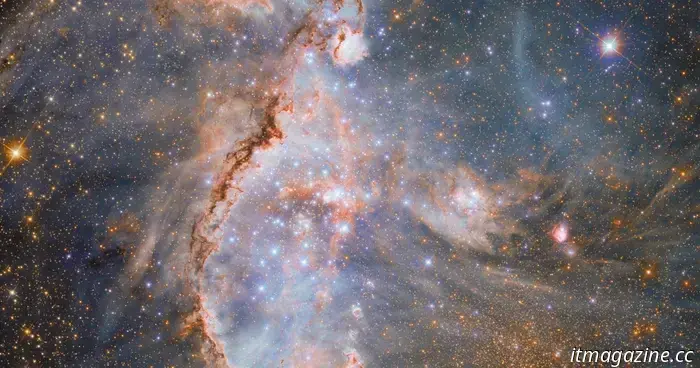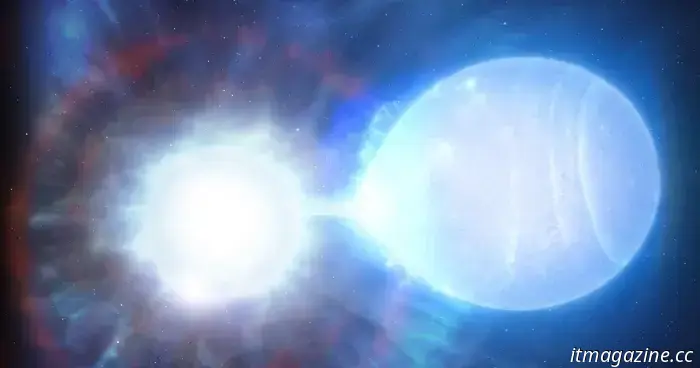
Hubble is celebrating its 35th anniversary: Check out its top images from the past year.
This month marks a significant milestone: the 35th anniversary of the Hubble Space Telescope. The esteemed telescope was launched on April 24, 1990, making it an ideal time to honor this cherished instrument and the ongoing contributions it makes to science and our comprehension of the cosmos.
Although more advanced telescopes like the James Webb Space Telescope possess greater power than Hubble, it still plays a crucial role as an optical space telescope, primarily observing wavelengths visible to the human eye. Meanwhile, Webb focuses on the infrared spectrum, allowing both telescopes to work in tandem for a more comprehensive view of astronomical objects than either could achieve alone.
Hubble remains actively used by astronomers and has generated thousands of images and extensive data for research throughout its lifetime. Fortunately for the public, these images are made accessible for everyone's enjoyment.
We’re reflecting on some of Hubble's most remarkable images from the past year, beginning with the image above: a new commemorative picture released for the telescope’s 35th anniversary. It showcases the star cluster NGC 346, situated in a satellite galaxy of the Milky Way known as the Small Magellanic Cloud, which is a vibrant area of star formation housing over 2,500 young stars.
Massive stars in a dusty cloud
ESA/Hubble & NASA, C. Murray
Among Hubble's most captivating images are those of nebulae, which are clouds of dust and gas illuminated in stunning colors. This particular image portrays a region at the edge of the Tarantula Nebula, located about 160,000 light-years from Earth, hosting some of the most massive stars known. These gigantic stars can be up to 200 times the mass of our sun and emit radiation that lights up the surrounding dust.
A galaxy with a glowing heart
ESA/Hubble & NASA, O. Fox, L. Jenkins, S. Van Dyk, A. Filippenko, J. Lee and the PHANGS-HST Team, D. de Martin (ESA/Hubble), M. Zamani (ESA/Hubble)
In addition to nebulae, Hubble also studies entire galaxies, such as this barred spiral galaxy known as NGC 1672. Positioned 49 million light-years away, this galaxy features striking spiral arms that extend from its center. The red bubbles along these arms are hydrogen gas glowing from radiation, all swirling around a particularly bright core referred to as an active galactic nucleus. This brightness originates from a supermassive black hole at the center, consuming dust and gas. As this material orbits the black hole, it forms an accretion disk, where it heats up and emits bright light.
A stellar nursery
ESA/Hubble & NASA, J. Tan (Chalmers University & University of Virginia), R. Fedriani (Institute for Astrophysics of Andalusia)
This eye-catching image showcases the nebula RCW 7, located relatively close at just 5,300 light-years from Earth. These environments serve as nurseries for new stars, where regions of dust and gas collapse to form clumps, attracting additional material over time due to gravity and eventually forming the cores of new protostars. This particular nebula contains an abundance of hydrogen ions, categorizing it as an H II region, with the ultraviolet radiation from young bright stars ionizing the hydrogen and giving it a soft pink hue. While most images from Hubble are captured in visible light, this one also utilizes the near-infrared capabilities of Hubble’s Wide Field Camera 3.
A practically perfect spiral galaxy
ESA/Hubble & NASA, C. Kilpatrick
Galaxies exhibit a variety of shapes and sizes, leading to their classification into groups based on structural features. One such category is spiral galaxies, which have arm-like formations extending from their centers—including our own Milky Way. Hubble captured this image of galaxy NGC 3430, noted for its distinct and graceful spiral arms, which helped define the original classification of spiral galaxies established by Edwin Hubble, the American astronomer after whom the telescope is named, in the 1920s.
A colorful Tarantula
ESA/Hubble & NASA, C. Murray
This breathtaking image illustrates another region of the Tarantula Nebula, where vibrant clouds of gas intertwine with dark strands of dust. Found in the Large Magellanic Cloud, this nebula was part of Hubble’s research into cosmic dust, essential for star and planet formation. Cosmic dust predominantly consists of carbon or silicates (molecules combining silicon and oxygen), and when large quantities of this dust gather around stars, it eventually coalesces to form the foundation of new planets.
A supernova spectacular
ESA/Hubble & NASA, C. Kilpatrick
When massive stars exhaust their fuel, they culminate their life cycles in explosive events known as supernovas. These blasts are so luminous that they can be observed from light-years







Other articles
 NYT Mini Crossword today: answers for the puzzle on Sunday, April 6.
The NYT Mini crossword may be significantly smaller than a standard crossword, but it's still quite challenging. If you're having trouble with today's puzzle, we have the solutions for you.
NYT Mini Crossword today: answers for the puzzle on Sunday, April 6.
The NYT Mini crossword may be significantly smaller than a standard crossword, but it's still quite challenging. If you're having trouble with today's puzzle, we have the solutions for you.
 A duo of stars in our cosmic neighborhood is headed towards a collision.
Astronomers have found two stars that are headed towards a collision.
A duo of stars in our cosmic neighborhood is headed towards a collision.
Astronomers have found two stars that are headed towards a collision.
 NYT Strands today: clues, spangram, and solutions for Sunday, April 6.
Strands offers a challenging twist on the traditional word search from NYT Games. If you're having difficulty and can't figure out today's puzzle, we've got assistance and clues for you right here.
NYT Strands today: clues, spangram, and solutions for Sunday, April 6.
Strands offers a challenging twist on the traditional word search from NYT Games. If you're having difficulty and can't figure out today's puzzle, we've got assistance and clues for you right here.
 I was amazed by these smart glasses that transform 2D videos into a 3D experience.
Viture One's latest Immersive 3D feature enhances the depth of streaming movies and videos, giving access to an extensive collection of 3D content.
I was amazed by these smart glasses that transform 2D videos into a 3D experience.
Viture One's latest Immersive 3D feature enhances the depth of streaming movies and videos, giving access to an extensive collection of 3D content.
 Don't expect an elaborate design update for the iPhone 17 Pro.
The iPhone 17 Pro is expected to enlarge the size of the camera bump, but it’s unlikely to feature any elaborate two-tone design or updates to the display aesthetics.
Don't expect an elaborate design update for the iPhone 17 Pro.
The iPhone 17 Pro is expected to enlarge the size of the camera bump, but it’s unlikely to feature any elaborate two-tone design or updates to the display aesthetics.
-large-screen-laptop-shootout.jpg) Acer Swift AI 16 versus Apple MacBook Air 15 (M4): a large-screen laptop comparison
The Acer Swift AI 16 strives to incorporate a large screen into a slim and lightweight laptop, competing with the Apple MacBook Air 15. Which one suits your needs better?
Acer Swift AI 16 versus Apple MacBook Air 15 (M4): a large-screen laptop comparison
The Acer Swift AI 16 strives to incorporate a large screen into a slim and lightweight laptop, competing with the Apple MacBook Air 15. Which one suits your needs better?
Hubble is celebrating its 35th anniversary: Check out its top images from the past year.
The cherished Hubble Space Telescope is approaching its 35th anniversary, and throughout the years, it has captured some breathtaking images.
